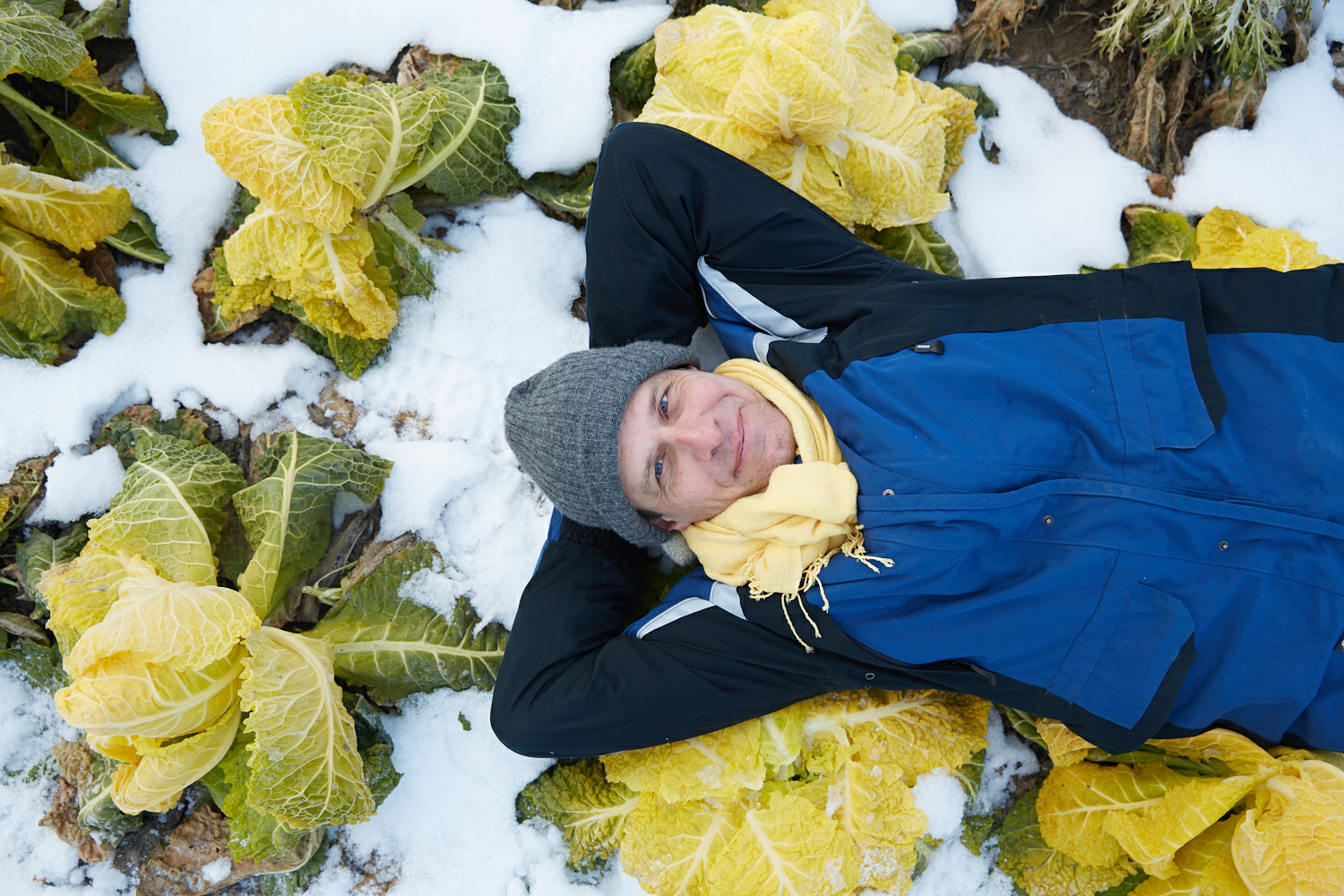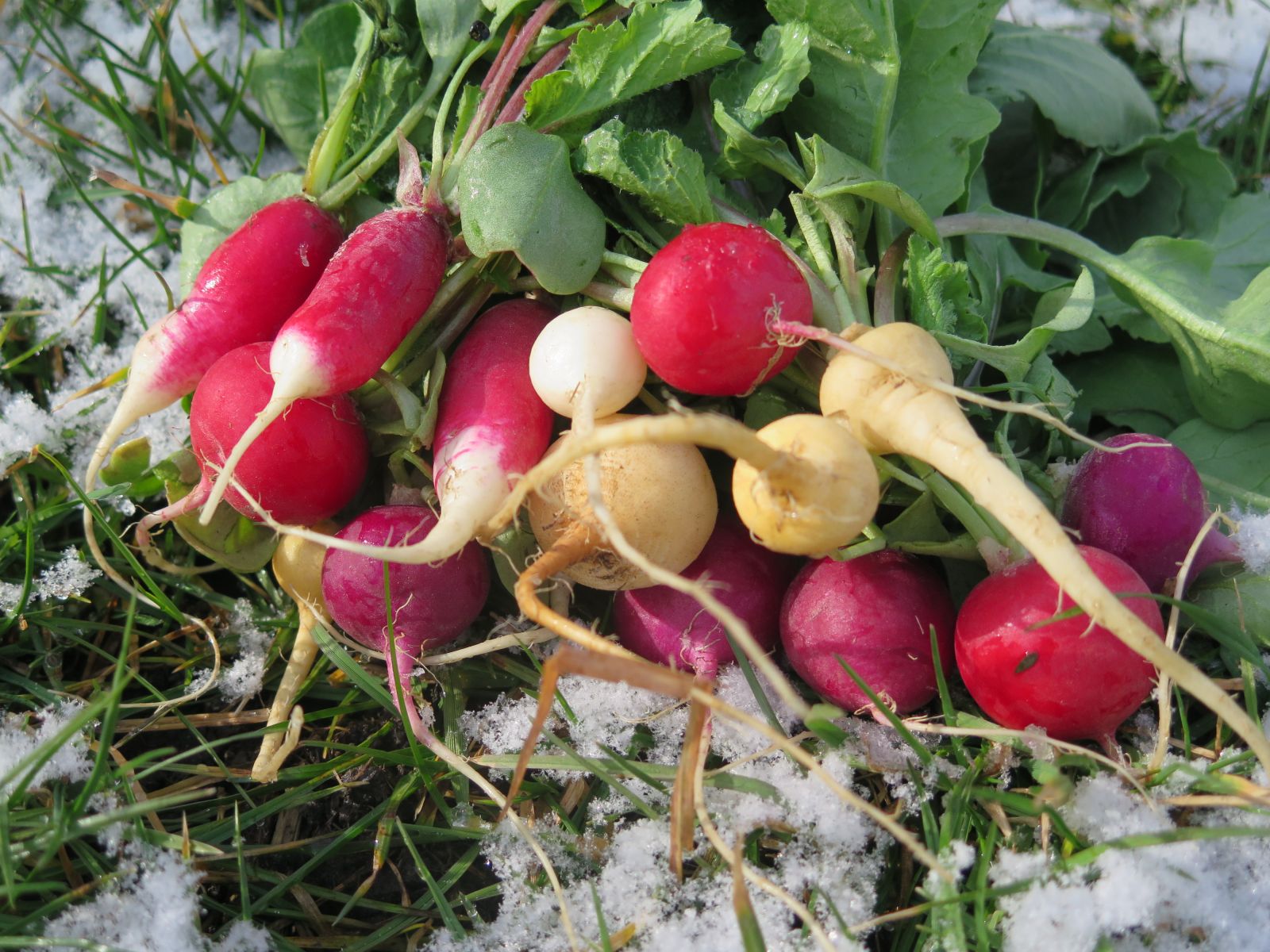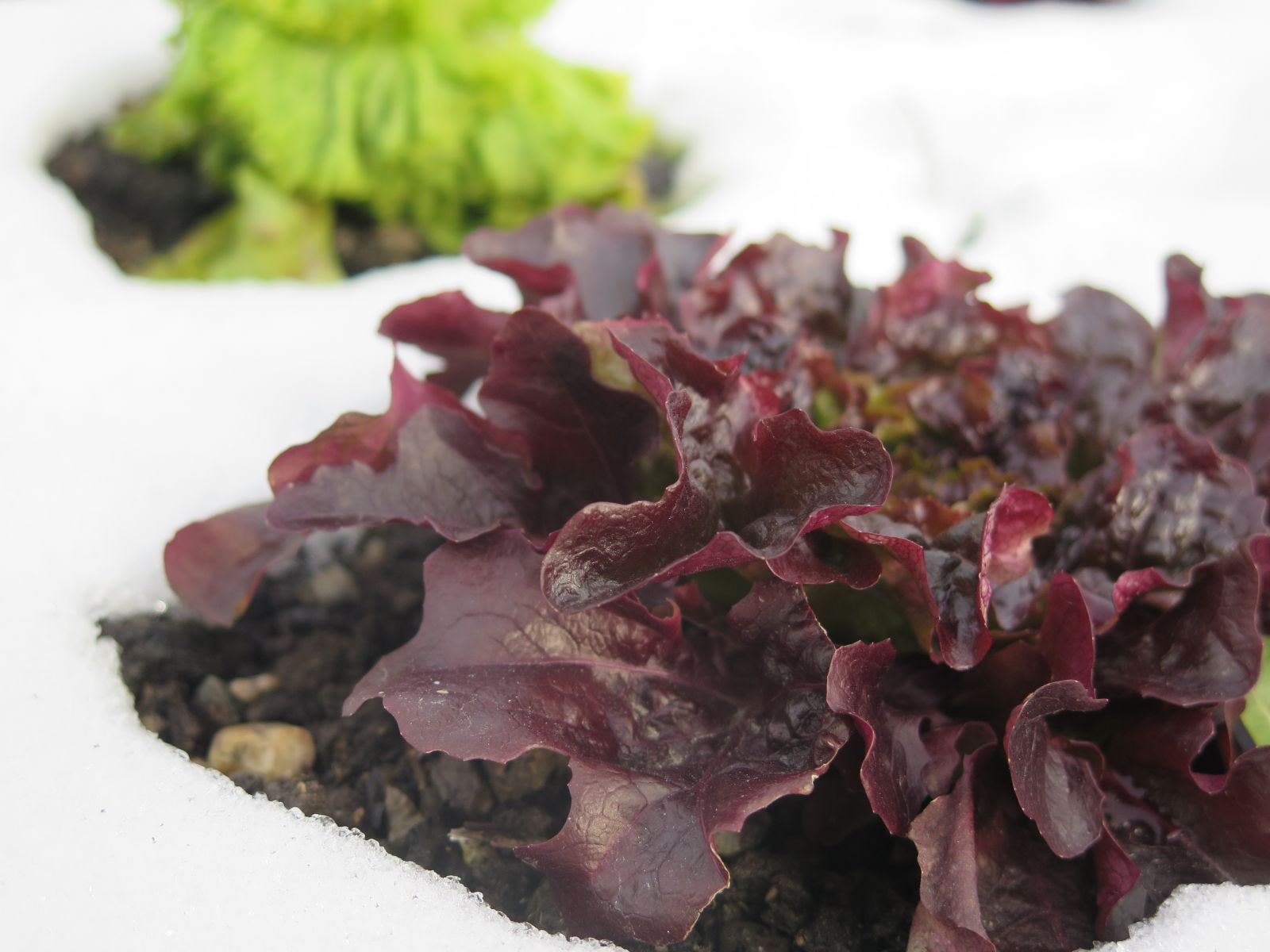
Interview With Wolfgang Palme: Winter Vegetables
We spoke to winter vegetable expert Wolfgang Palme about growing vegetables in winter. He has been researching vegetable cultivation in winter for over ten years and knows how it works. He passes on his extensive know-how at the Federal Institute of Horticulture and Research Schönbrunn and shares his enthusiasm as a lecturer with everyone who wants to have fresh vegetables all year round. In the middle of Vienna, Wolfgang Palmer looks after the City Farm in Augarten, where he infects gardeners young and old with winter garden fever. Today we can find out more from Wolfgang and learn how we can grow fresh vegetables even in winter.

Which Vegetables Are Suitable for Growing in Winter?
Wolfgang Palme: We divide the whole group of winter vegetables into two parts. One is the winter fine vegetables, including herbs, lettuces, radishes and tender, colorful carrots. They are particularly sensitive to too much moisture from above, i.e. to precipitation in winter, to snow, to rain. And then there is a second large group, the outdoor vegetables. They stand outside in winter storms and frost and snow. They can withstand even that and are the real winter heroes, because they put up with a lot during these uncomfortable weeks and months and are still available to us with their freshly harvested produce.
Generally speaking, anything that closes its head is less flexible when it comes to the exchange of moisture and temperature. This means that lettuces and leafy charcoal, which form an open rosette, are more suitable. Leafy cabbage, leafy china cabbage, lollo and batavia lettuces, plucking lettuces, but also romaine and Asian lettuces.

You Are Looking for a Garden Community?
This article is made from a dear member of the Fryd community. Here you can meet experienced gardeners and exchange ideas or ask for help and advice. If you want to connect with other garden lovers, this is the right place for you!
Join Community NowWhat Actually Makes Growing Vegetables in Winter So Difficult?
Wolfang Palme: I studied the literature on plant physiology and, interestingly, a lot of it came from the 1950s, when research was carried out into how plants deal with stress factors, i.e. heat, cold, drought and UV radiation. We focused specifically on frost and the conditions in winter. We discovered mechanisms at cellular level that make it possible for the plant to cope with frost. To put it in a nutshell: They store frost protection in the form of sugars, lipids and amino acids, among other things. These substances are then so highly concentrated inside the cell that frost does not form. Frost is only dangerous for the plant if ice crystals form inside the cell, which then crack and burst the cell. However, if ice crystals form in the cell tissue, this is harmless. This is a reversible process, it can thaw again and no damage is done. We have found that the lettuces as a group can withstand frost down to below -11 ° C/12 ° F. They then look kind of glassy and frozen, with the rosette lying flat on the ground. But when they slowly thaw out again, they look fresh again. Of course, not all vegetable plants can do this equally well. We have therefore divided plants into different categories according to their frost hardiness.
However, we have discovered that it is not primarily the frost and cold that limit winter vegetable cultivation. There are completely different meteorological parameters that are more threatening to the plant in winter than the frost and cold itself. One of these is light. A lack of light in winter means that plants tend to starve in winter, so to speak. They get too little light, the length of daylight is restricted and this delays the rate of development. And a second, very, very important factor is moisture, namely soil and air humidity. In winter, more vegetables go moldy and rot than freeze. So you have to keep them fairly dry in winter to keep them healthy.

How Can You Protect the Plants in Winter?
Wolfgang Palme: Sensitive fine vegetables in particular need to be protected from moisture. This can be a raised bed cover, a cold frame, a small foil tunnel or a greenhouse. It's not primarily about the temperature inside, but about protecting our plants from uncontrolled moisture from above. These protected rooms, on the other hand, must be well ventilated. The humidity has to get out again. If condensation forms in there, which then drips down and wets the leaves, perhaps causing hours of moisture on the ground overnight, then it becomes dangerous because fungal diseases such as downy mildew or gray mold will strike, because they are also more frost-hardy than you might think.
When Do You Have to Start Preparing to Harvest Vegetables in Winter?
Wolfgang Palme: At the beginning of July, you should take care of plants for fall and winter. These are the leaf cabbage, the kale, the palm cabbage, the ornamental cabbage, the various fall and winter cabbages, the chicory, the sugar loaf and the Italian varieties, which already need the summer so that they can develop sufficiently and vigorously to be usable in winter. In August, we also sow classic fall vegetables, beet, celery, savoy cabbage and white cabbage, broccoli and cauliflower. And before autumn arrives, the cabbage vegetables need nutrients again, which means we fertilize them during the summer.
The final preparations for the winter start in September. Varieties that grow faster are planted, lettuces for example. Lettuces that are planted in mid to late September can then be harvested in time for Christmas. With these more sensitive varieties, it is important to remember that you need to take care of covers. So fall is the right time to build covers.
If you have any questions or comments, please write to us at magazin@fryd.app. Would you like to receive helpful gardening tips all year round and plan your own beds optimally? Then register here or download the Fryd app for Android or iOS.
Fryd - your digital bed planner
Current Topics in the Community

#red , #tuesday

Liked 1 times
#testpostcount

Dec 2025
Popular Articles

Companion Plants for Carrots: What (Not) to Plant With Carrots

Companion Plants for Celery : What (Not) to Plant With Celery?

Strawberry Types: List of Best Strawberry Varieties

Companion Planting With Strawberries: Companion Plants and Planting Plan

Basil Varieties & Types at a Glance

What to Plant With Cabbage: Good and Bad Companion Plants

Fertilizing Strawberries: Home Remedies & Natural Fertilizers at a Glance

Growing Sweet Potatoes: Tips on Cultivation & Companion Plants

Companion Plants for Kitchen Herbs: Chives, Parsley & Co

What Herbs Can Be Planted Together?